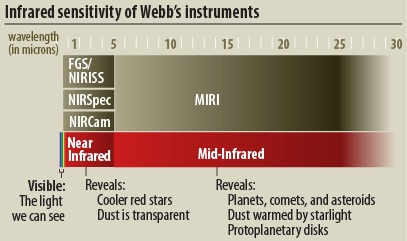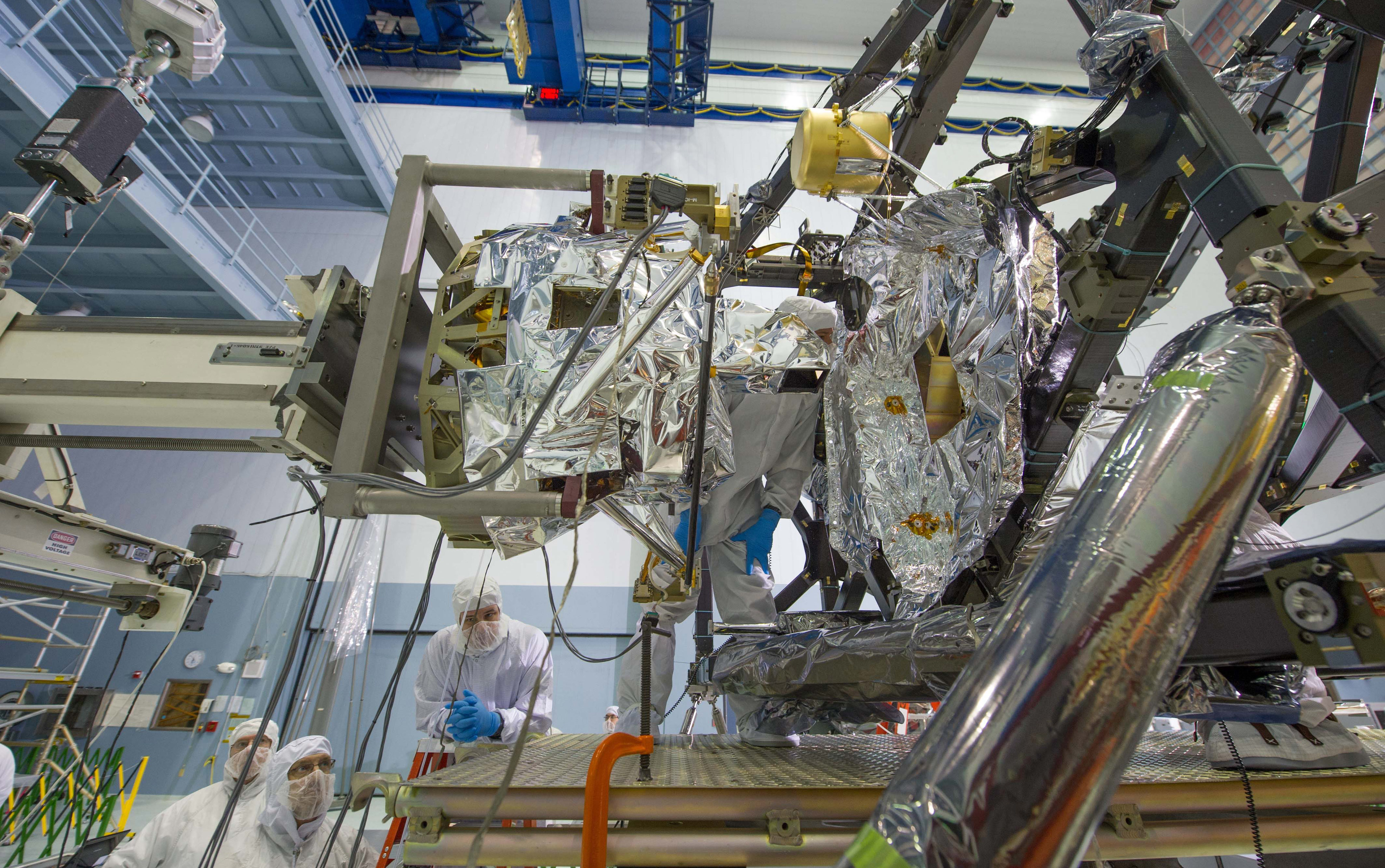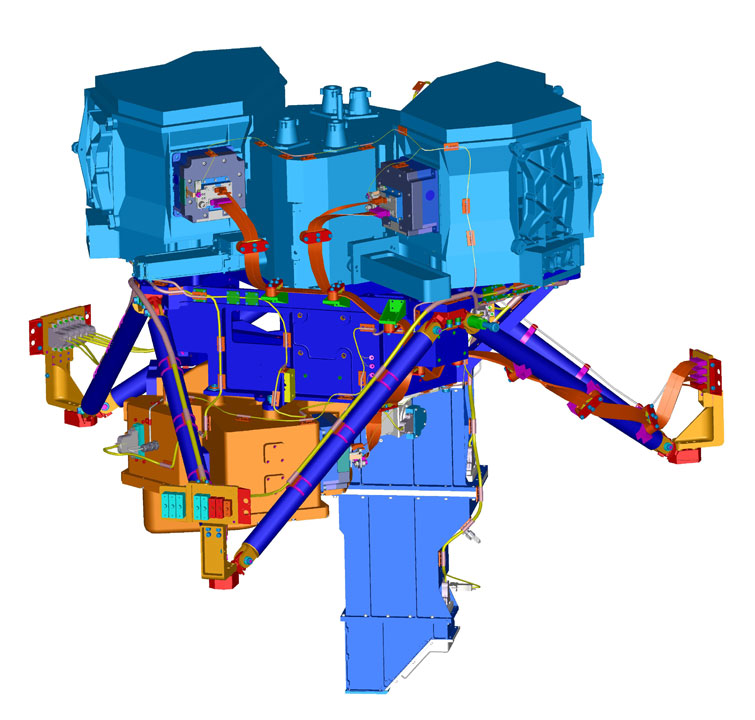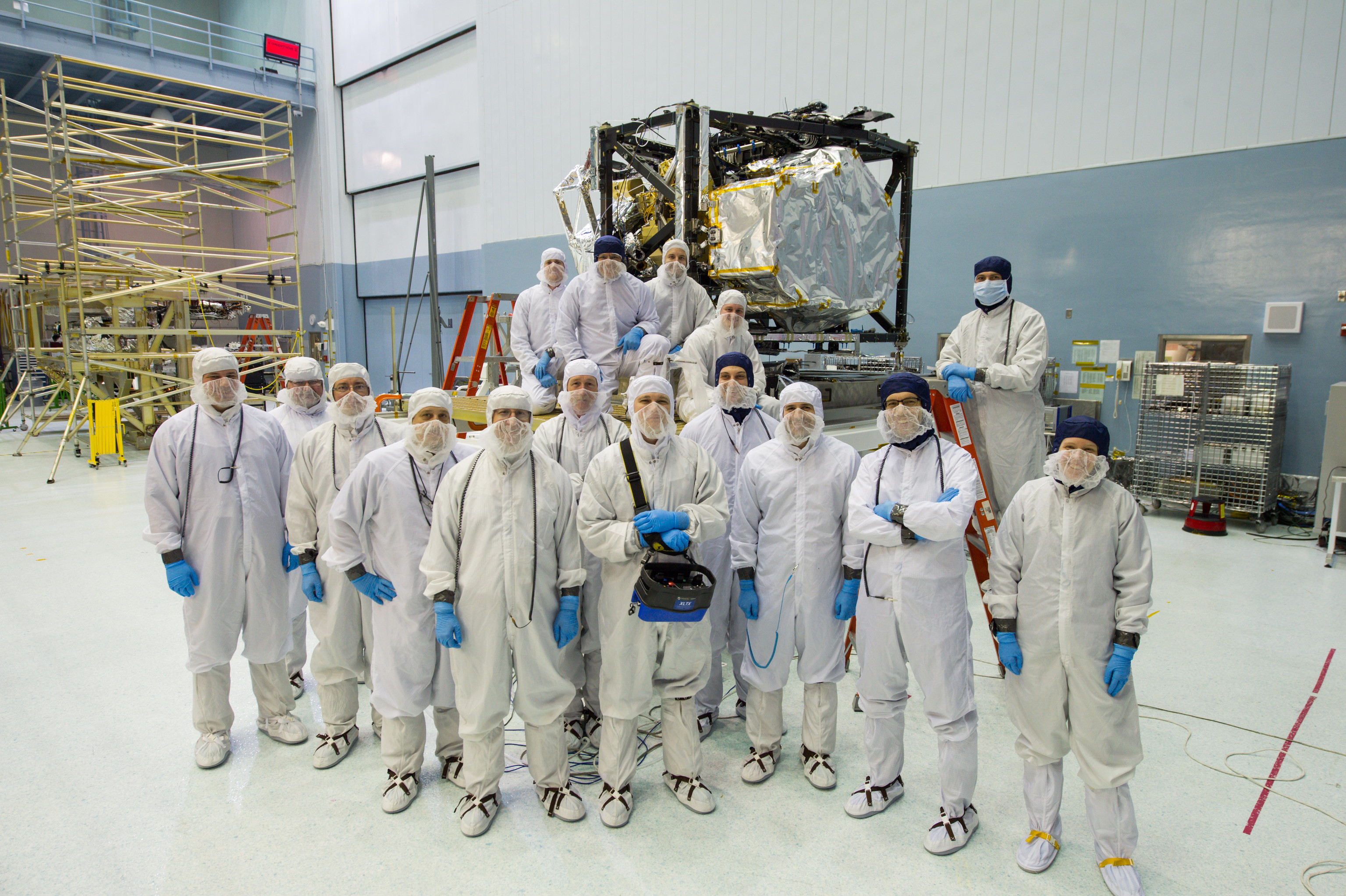Quick Facts
Mid-Infrared Instrument (MIRI)

The Mid-Infrared Instrument (MIRI) has both a camera and a spectrograph that sees light in the mid-infrared region of the electromagnetic spectrum, with wavelengths that are longer than our eyes see.
MIRI covers the wavelength range of 5 to 28 microns. Its sensitive detectors allow it to see the redshifted light of distant galaxies, newly forming stars, and faintly visible comets as well as objects in the Kuiper Belt. MIRI's camera provides wide-field, broadband imaging that continues the breathtaking astrophotography that has made Hubble so universally admired. The spectrograph enables medium-resolution spectroscopy, providing new physical details of the distant objects it observes. (Read more about spectroscopy on the NIRSpec page.)

Video: MIRI 3d Diagram Rotation
MIRI Image Gallery
Gallery of the development, testing and commissioning of the MIRI in reverse chronological order.
The image below is a SLIDESHOW. Hover over the image to see the image title and controls. Click the image to go to a detail page with more info and the ability to download the image at various resolutions (click downward arrow in lower right corner).
In Depth: Technical Details For MIRI
The MIRI has three Arsenic-doped Silicon (Si:As) detector arrays. The camera module provides wide-field broadband imagery, and the spectrograph module provides medium-resolution spectroscopy over a smaller field of view compared to the imager. The nominal operating temperature for the MIRI is 7K. This level of cooling cannot be attained using the passive cooling provided by the Thermal Management Subsystem. Webb carries an innovative "cryocooler" that is dedicated to cooling MIRI's detectors. Instead, there is a two-step process: A Pulse Tube precooler gets the instrument down to 18K; and a Joule-Thomson Loop heat exchanger knocks it down to 7K.
Resources:

MIRI was developed by ...
the MIRI Consortium, a group that consists of scientists and engineers from European countries, a team from the Jet Propulsion Lab in California, and scientists from several U.S. institutions.
James Webb Space Telescope's Mid-Infrared Instrument (or MIRI) in the
giant clean room at NASA's Goddard Space Flight Center in Greenbelt, Md. and gave it
a clean bill of health after its transatlantic journey from the U.K. Credit: NASA/Chris Gunn







